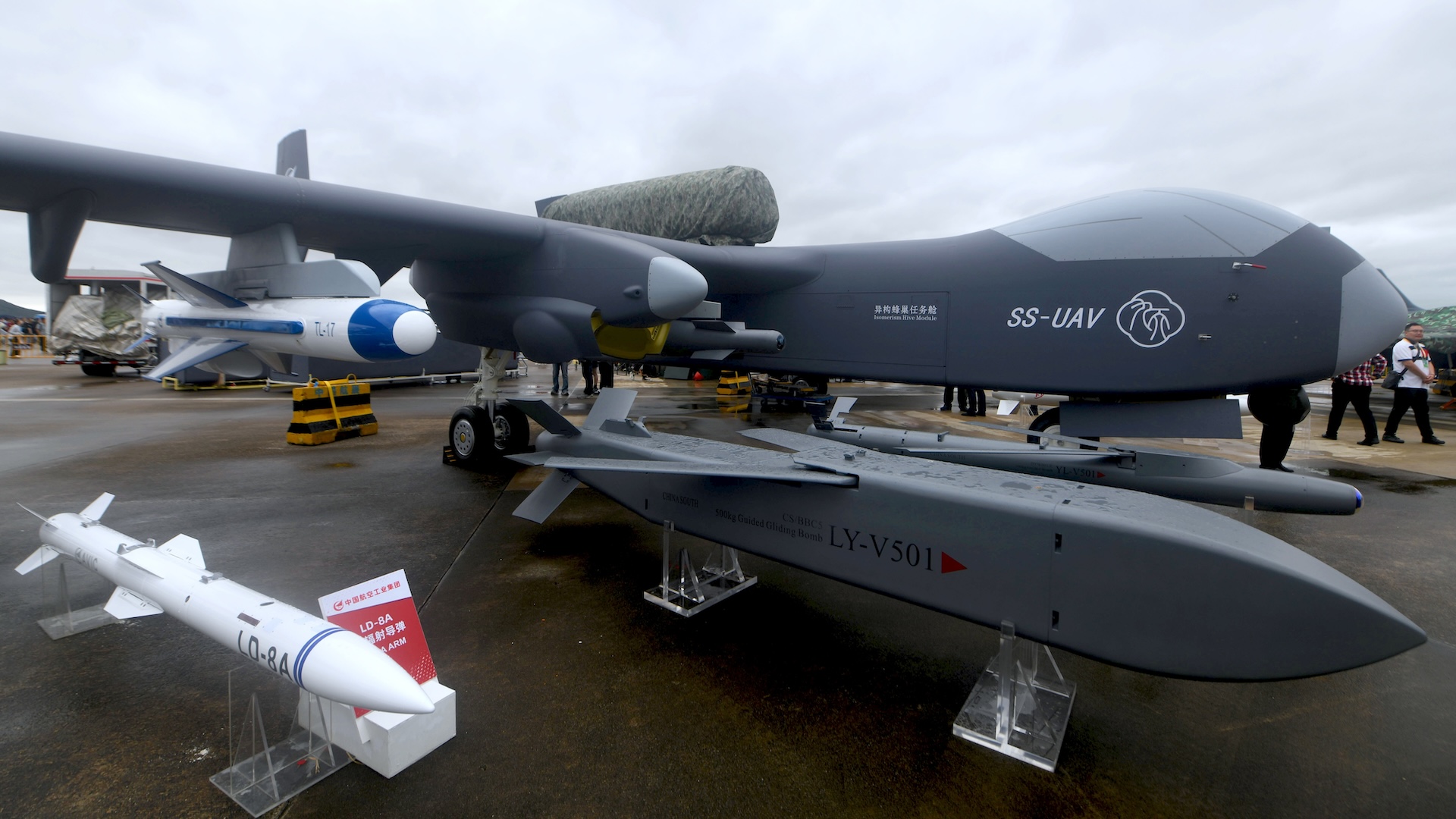China is set to deploy the largest drone carrier in the world by the end of June. Nicknamed the “drone mothership,” the aircraft promises to provide China’s People’s Liberation Army (PLA) with more capability to deploy swarms of drones for combat, surveillance, emergency rescue missions, and other purposes.
The Jiu Tian drone carrier, an 11-ton (10 tonnes) unmanned aerial vehicle (UAV), can carry up to 100 smaller UAVs weighing an additional 6.6 tons (6 tonnes) up to 4,350 miles (7,000 km), according to a report published in the South China Morning Post (SCMP).
The aircraft was introduced in November at the international Zhuhai Air Show, China’s biggest aerospace trade show, and has the potential to launch kamikaze drones (also called loitering munitions) — UAVs that are designed to wait until their target is found, then intercept and crash into them, often while armed with explosives.
Kamikaze drones are becoming more common in warfare — Russia has used them extensively in its invasion of Ukraine to target power stations, population centers, and military equipment. Ukraine has combated their use by shooting down the drones before they can strike, setting up advanced air defense systems from allies, and building makeshift cages from chain link fencing and tree branches around likely targets.
Unlike kamikaze drones already in use, China’s drone “mothership” is designed to launch entire swarms of coordinating drones that might be able to overwhelm some existing air defense systems, according to the South China Morning Post.
“The big thing that really keeps me up at night is swarms,” Col. Andrew Konicki, the head of the US Marine Corps Systems Command’s ground-based air defense said at a military exposition for US Marines on April 30.
Individual drones are often viewed as expendable, but when working together, they can accomplish a lot — especially when coordinated using artificial intelligence (AI) and machine learning to navigate obstacles and respond to some attempts to interfere with their operations. Also, drone swarms are often cheaper to build and maintain than the defence systems used to shoot them down, depending on the level of technology and size of the swarm.
However, questions remain over how practical the Jiu Tian would be in some scenarios, and there isn’t a lot of information about the carrier’s technical specifications.
“China’s display of advanced weapons systems can generate hype in ways that can align with deterrent and propaganda objectives, even when the actual capabilities remain unconfirmed,” Elsa Kania, adjunct senior fellow at the Center for a New American Security, told Live Science in an email. Her research centers on China’s military strategy, defense innovation, and emerging technologies.
“For instance, given its size, there are reasons to question the survivability of the Jiutian in highly contested environments, even equipped with electronic warfare capabilities.The Chinese defense industry is also a leading exporter of unmanned systems, which has accelerated the global diffusion of these capabilities. The displaying of and deliberate disclosures about advanced unmanned systems can also serve advertising purposes sometimes in that regard.”
Jiu Tian‘s drone swarms also have many applications beyond combat, including resource monitoring, disaster relief, and emergency response operations thanks to its modular payload design. Swarms could make it a lot easier to assess damage from natural disasters, look for survivors, and help rescuers navigate dangerous terrain.
The aircraft’s first mission is expected to begin before the end of June and will consist of operational tests before it joins the rest of the PLA’s UAV fleet.
